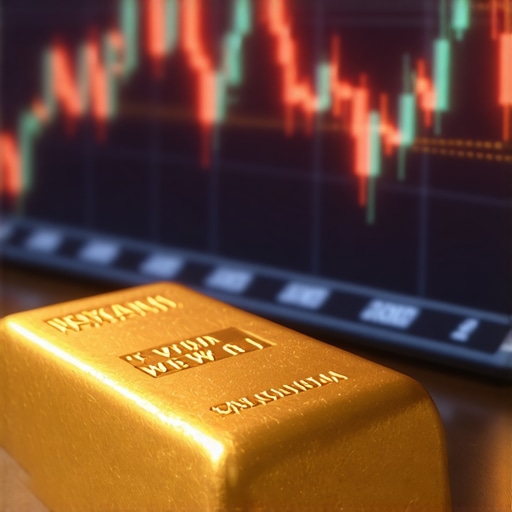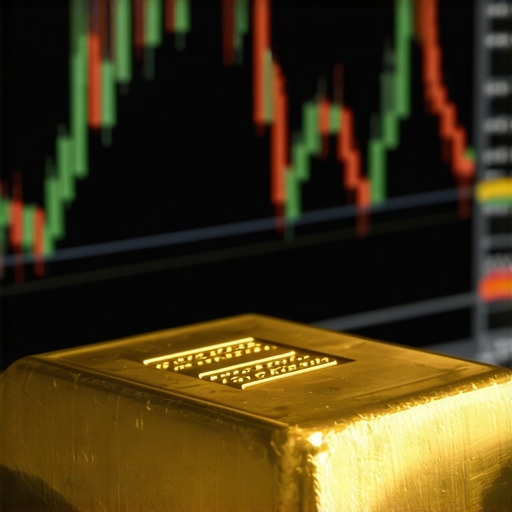Understanding the 2025 Gold Price Forecast
The gold market has long been a barometer of economic stability and a refuge for investors seeking a hedge against inflation and uncertainty. As we look toward 2025, various factors will influence gold prices, making it essential for investors to stay informed about upcoming trends. This article provides a comprehensive forecast of gold prices, exploring critical trends every investor should consider.
Factors Influencing Gold Price Movements
Several key factors will affect the price of gold in 2025. Understanding these influences is crucial for any investor aiming to navigate the gold market successfully. The primary factors include:
- Economic Indicators: The state of the global economy plays a significant role in determining gold prices. Inflation rates, interest rates, and GDP growth can all impact demand for gold as a safe-haven asset.
- Geopolitical Tensions: Political instability and conflicts often lead to increased demand for gold. Investors typically flock to gold during times of uncertainty, driving up its price.
- Central Bank Policies: Central banks around the world hold substantial gold reserves. Their buying and selling activities can significantly influence market prices. For instance, if central banks increase their gold purchases, it could signal a robust demand that may lead to a price increase.
- Technological Advancements: Innovations in mining and extraction technologies can affect the supply side of the gold market. Efficient production methods can lower costs and potentially stabilize prices.
- Investor Sentiment: Market psychology can drive short-term price fluctuations. Tracking investor behavior and market sentiment can provide insights into potential price movements. For detailed insights into how investor sentiment impacts gold prices, consider our article on How Gold Sets Itself Apart from Other Investments Today.
Predicted Gold Price Trends for 2025
As we look into 2025, analysts predict a range of possible outcomes for gold prices. Many experts suggest that as economic uncertainties persist, gold may continue to rise in value. Historical trends indicate that during times of inflation or market volatility, gold tends to appreciate. For instance, if inflation rates exceed expectations, we could see gold prices reaching new highs. For a deeper understanding of inflation’s impact on gold, read our in-depth exploration of Why Gold is a Smart Hedge Against Economic Uncertainty.
Furthermore, the growing interest in gold-backed financial products, such as Gold ETFs, is expected to drive demand, further influencing prices. Investors looking to capitalize on these trends might find valuable insights in our guide on Understanding Gold ETFs: A Smart Investor’s Guide.
Conclusion
In conclusion, the 2025 gold price forecast hinges on multiple factors ranging from economic indicators to geopolitical events. Staying informed about these trends will equip investors with the knowledge needed to make strategic decisions in the gold market. As we move closer to 2025, it’s essential to keep an eye on these developments to optimize your investment strategy in gold.
Long-Term Gold Investment Strategies
Investing in gold can be a strategic move for those looking to diversify their portfolios. As you consider your options for 2025, it’s important to understand various gold investment strategies. A well-rounded approach not only provides security but also the potential for long-term growth. For new investors, exploring Best Gold Investments for Beginners: Tips and Strategies can help you navigate this market effectively.
Diversifying with Gold Mutual Funds
One of the most effective ways to invest in gold is through mutual funds, which allow investors to gain exposure to gold without needing to purchase physical assets. Gold mutual funds invest in gold mining companies or gold bullion, offering an easy entry point for beginners. For insights into maximizing returns, consider our guide on Maximizing Returns: Investing in Gold Mutual Funds.
Gold ETFs: A Flexible Investment Option
Gold Exchange-Traded Funds (ETFs) provide another flexible investment option. These funds track the price of gold and are traded on stock exchanges, making them easily accessible. Investors can benefit from lower fees compared to traditional mutual funds. To learn more about how these work, check out Understanding Gold ETFs: A Smart Investor’s Guide.
Understanding Market Sentiment
Market sentiment can significantly influence gold prices. Recognizing the psychological factors that drive investor behavior is crucial for predicting potential price movements. For example, during periods of economic uncertainty, demand for gold typically increases as investors seek safety. To delve deeper into how investor sentiment impacts the gold market, refer to our article on How Gold Sets Itself Apart from Other Investments Today.
Geopolitical Influences on Gold Demand
Geopolitical tensions often lead to increased gold demand. Investors tend to flock to gold during international crises, driving prices up. Understanding the political landscape and its implications for gold markets can help investors make informed decisions. For comprehensive insights into how these tensions shape the market, read our piece on The Role of Gold in Economic Uncertainty: Why Choose Gold as a Hedge?.
Analyzing Gold Price Fluctuations
The fluctuations in gold prices can be attributed to various factors, including changes in interest rates and inflation rates. Monitoring these economic indicators will help investors anticipate price changes. To gain a broader perspective on gold price volatility, consider our article on Gold Price Volatility: How to Protect Your Investments.
Expert Insights on Gold Market Trends
As we approach 2025, experts predict several trends that will shape the gold market. Analysts suggest that continued economic instability will lead to increased gold investment. Keeping abreast of expert analyses can provide valuable insights into potential price movements. For a detailed look at market predictions, check out 2025 Gold Price Forecast: What Investors Should Know.
Conclusion
In conclusion, understanding the dynamics of the gold market is essential for making informed investment decisions. With various strategies like gold mutual funds and ETFs, coupled with an awareness of market sentiment and geopolitical influences, investors can better position themselves in the ever-evolving gold landscape. As 2025 approaches, staying informed about trends and expert insights will be crucial for optimizing your investment strategy.
Gold Investment Options: A Comprehensive Overview
As we delve into 2025, understanding gold investment options is crucial for maximizing returns. Investors should consider various avenues, including physical gold, gold stocks, mutual funds, and ETFs. Each option presents unique advantages and risks, making it essential to assess them according to your investment goals and risk tolerance.
Physical Gold: Bullion and Coins
Investing in physical gold remains a popular choice for many. Gold bullion and coins are tangible assets that provide a sense of security, especially during economic downturns. However, it’s important to consider storage and insurance costs when investing in physical assets. For detailed insights on buying gold bullion, refer to our guide on Buying Gold Bullion: Your Essential Investing Guide.
Gold Stocks: A Profitable Alternative
For those looking to invest in the gold market without purchasing physical assets, gold stocks are an attractive alternative. Investing in mining companies or gold-related firms allows you to benefit from price fluctuations without the need for physical storage. However, gold stocks can be volatile, influenced by company performance and broader market conditions. To gain a better understanding of investing in gold stocks, check out our comprehensive beginner’s guide on Investing in Gold Stocks: A Comprehensive Beginner’s Guide.
Evaluating Gold Investment Strategies
When considering gold investments, it’s essential to evaluate various investment strategies. For instance, diversification is key; allocating a portion of your portfolio to gold can provide a hedge against inflation and economic uncertainty. You can explore our article on Understanding the Role of Gold in Your Investment Strategy for in-depth strategies tailored for 2025.
Gold ETFs: Benefits and Drawbacks
Gold ETFs (Exchange-Traded Funds) offer a liquid and low-cost way to invest in gold. They provide exposure to the price of gold without the complexities of physical ownership. However, potential investors should be aware of management fees and the market risks associated with ETFs. To understand the nuances of investing in gold ETFs, read our guide on Understanding Gold ETFs: A Smart Investor’s Guide.
Understanding Gold Demand Dynamics
The dynamics of gold demand are influenced by various factors, including economic conditions, inflation rates, and geopolitical tensions. Understanding these drivers can help investors make informed decisions regarding the timing of their investments. For insights into current gold demand trends, explore our article on Gold Demand Trends: Essential Insights for Investors.
Geopolitical Factors Impacting Gold Prices
During times of geopolitical instability, gold often serves as a safe haven, resulting in increased demand. Investors should stay informed about global events and their potential impact on gold prices. Our article on The Role of Gold in Economic Uncertainty: Why Choose Gold as a Hedge? provides valuable insights into this aspect of gold investment.
Conclusion
In summary, exploring various gold investment options and understanding demand dynamics are crucial for successful investing in 2025. Whether you choose physical gold, stocks, or ETFs, each option has its unique characteristics. By evaluating these strategies and staying informed about market trends, you can optimize your gold investment for long-term success.
Physical Gold: The Pros and Cons
Investing in physical gold has its advantages and disadvantages. On one hand, physical gold, such as bullion and coins, offers tangible value and security against inflation and economic instability. On the other hand, it requires secure storage and insurance, which can add to overall investment costs. If you are considering physical gold, it’s essential to weigh these factors carefully. For further information on what to consider when buying gold coins, check out our guide on Quick Guide to Buying Gold Coins for Beginners.
Gold Mutual Funds: Diversifying Your Portfolio
Gold mutual funds are an excellent way to diversify your investment portfolio. They pool money from multiple investors to purchase shares in gold mining companies or gold-related assets. This approach mitigates risk and provides exposure to the gold market without needing to buy physical gold. To learn more about investing in gold mutual funds, visit our post on Maximizing Returns: Investing in Gold Mutual Funds.
Understanding Gold Price Volatility
Gold prices can be highly volatile, affected by various factors such as currency fluctuations, interest rates, and economic indicators. Understanding these influences is vital for making informed investment decisions. To gain insights into how gold prices are influenced by market demand trends, refer to our article on How Gold Prices are Influenced by Market Demand Trends.
Strategies for Successful Gold Trading
For investors interested in trading gold, having effective strategies in place is crucial. Successful trading involves technical analysis, market sentiment evaluation, and proper risk management. For more tips on trading gold effectively in 2025, check out our post on Evaluating Gold Trading Techniques for 2025.
Gold Price Forecast: What to Expect in 2025
Looking ahead, gold price forecasts suggest that several factors will play a role in price movements. Analysts predict that demand for gold will remain strong due to ongoing economic uncertainties and geopolitical tensions. Understanding these trends can help investors make better decisions. For more insights, see our post on 2025 Gold Price Forecast: What Investors Should Know.
Conclusion: Navigating the Gold Investment Landscape
In conclusion, navigating the gold investment landscape in 2025 requires a comprehensive understanding of various investment options, market dynamics, and effective strategies. Whether you choose physical gold, stocks, ETFs, or mutual funds, each option presents unique benefits and challenges. By staying informed about market trends and employing sound investment practices, you can maximize your gold investment returns and build a robust portfolio for the future. For a comprehensive guide to buying gold, visit our page on Gold Investment: A Comprehensive Guide to Buying Gold.
FAQs About Gold Investment
What are the benefits of investing in physical gold?
Investing in physical gold offers several benefits, including tangible asset ownership, protection against inflation, and portfolio diversification. It serves as a hedge during economic downturns and can be liquidated quickly when needed.
How do gold mutual funds differ from physical gold?
Gold mutual funds allow investors to gain exposure to the gold market without owning the physical asset. They invest in gold mining companies and related assets, providing diversification and lower storage costs compared to physical gold.
What factors influence gold prices?
Gold prices are influenced by various factors including currency fluctuations, interest rates, geopolitical tensions, and market demand. Understanding these influences is essential for making informed investment decisions.
How do I choose the right gold investment strategy?
Choosing the right gold investment strategy depends on your financial goals, risk tolerance, and investment timeline. Options include physical gold, ETFs, mutual funds, or gold stocks, each with unique benefits and risks.
What are the risks associated with gold investment?
Risks associated with gold investment include price volatility, storage and insurance costs for physical gold, and the performance of gold mining companies for stocks and mutual funds. Understanding these risks can help in making informed decisions.
Is gold a good investment during economic uncertainty?
Yes, gold is often considered a safe-haven asset during economic uncertainty. Investors tend to flock to gold during times of instability, which can lead to price increases and provide a hedge against losses in other asset classes.
How often should I review my gold investment portfolio?
It is advisable to review your gold investment portfolio at least annually or whenever there are significant changes in the market or your financial situation. This helps ensure that your investments align with your goals and risk tolerance.
Can I invest in gold through retirement accounts?
Yes, you can invest in gold through certain retirement accounts, such as a self-directed IRA, which allows for investments in physical gold, precious metals, and other non-traditional assets.
What is the future outlook for gold prices?
The future outlook for gold prices remains optimistic, particularly due to ongoing economic uncertainties and geopolitical tensions. Analysts suggest that demand for gold will continue to be strong, making it a viable long-term investment option.
Conclusion: Making Informed Gold Investment Decisions
In conclusion, investing in gold provides various options ranging from physical gold to mutual funds and ETFs. Each investment type has unique benefits and challenges, and understanding the dynamics of the gold market is crucial. By staying informed about market trends, evaluating your financial goals, and considering effective strategies, you can navigate the gold investment landscape successfully. Whether you are looking for a safe-haven asset or a means to diversify your portfolio, gold remains a relevant and valuable investment choice in 2025 and beyond.










